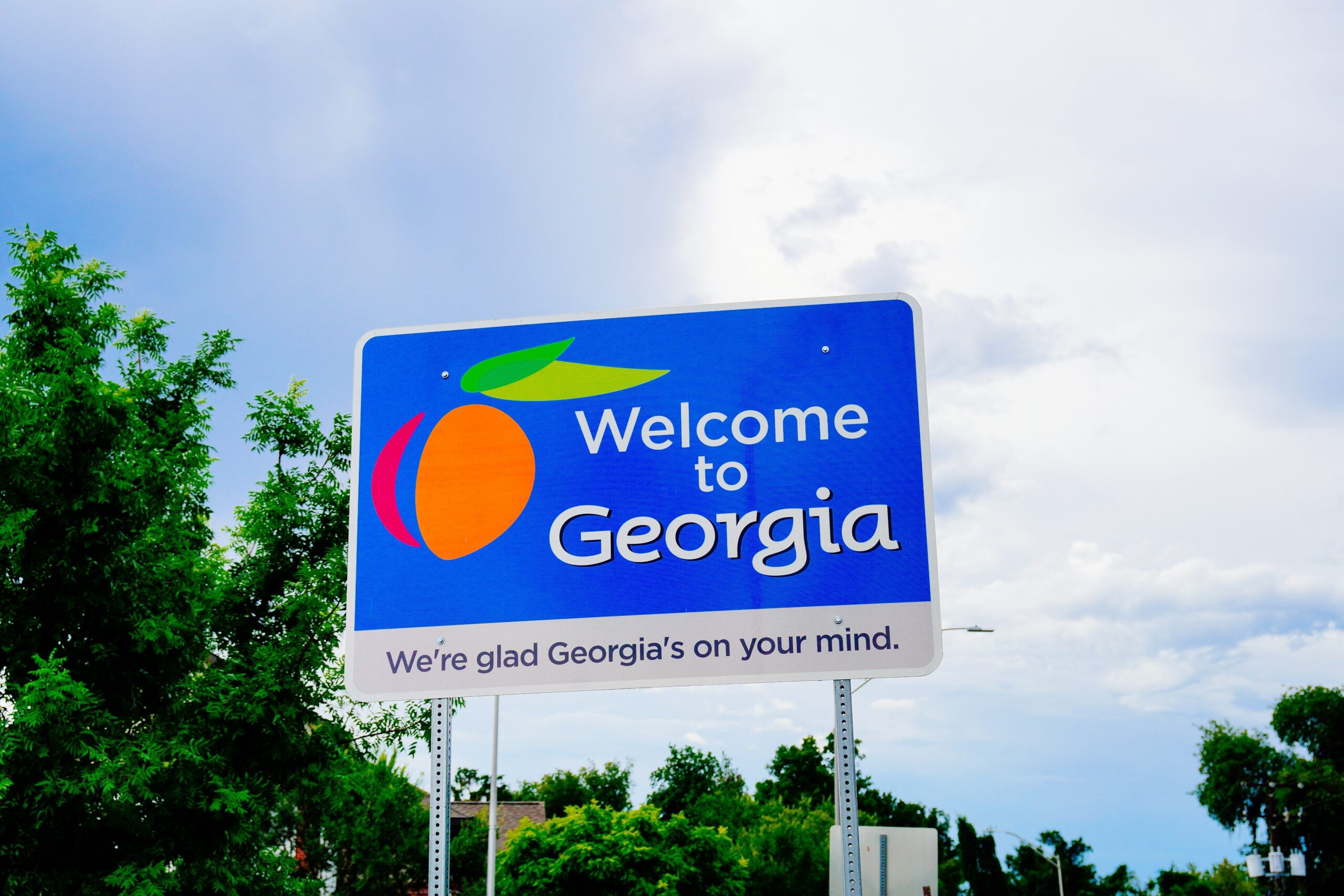Georgia is not merely a place on the map; it is a feeling — a slow, melodic rhythm carried by the rustle of live oaks, the laughter on a Savannah street, and the hum of cicadas drifting through humid air. The Peach State, as it’s affectionately known, embodies the very soul of the American South: its warmth, its contradictions, and its deep sense of story.
Stretching from the Appalachian foothills to the Atlantic coast, Georgia is a land of vivid diversity. In the north, mist curls over the Blue Ridge Mountains, and waterfalls tumble through ancient forests. Central Georgia hums with the soft pace of small towns and fields heavy with history. To the south, the Okefenokee Swamp stirs with primordial life, while on the coast, barrier islands like St. Simons and Jekyll glimmer with a timeless, golden stillness.
Yet beyond its landscapes, Georgia’s heartbeat lies in its people and culture — in the blend of tradition and innovation that defines cities like Atlanta, where music, art, and social progress have reshaped the modern South. It is a state of storytelling, where voices like Flannery O’Connor’s and Ray Charles’s echo through time, where gospel meets hip-hop, and where every meal feels like an act of communion.
Georgia is a place that rewards lingering — not rushing through. It invites reflection in the shade of an old oak, conversation on a porch at dusk, and awe before a skyline that has never stopped reinventing itself.
Here, the past is never forgotten, and the future is always unfolding — beautifully, deliberately, like the bloom of a magnolia in the Southern sun.
Atlanta — The Beating Heart of the New South
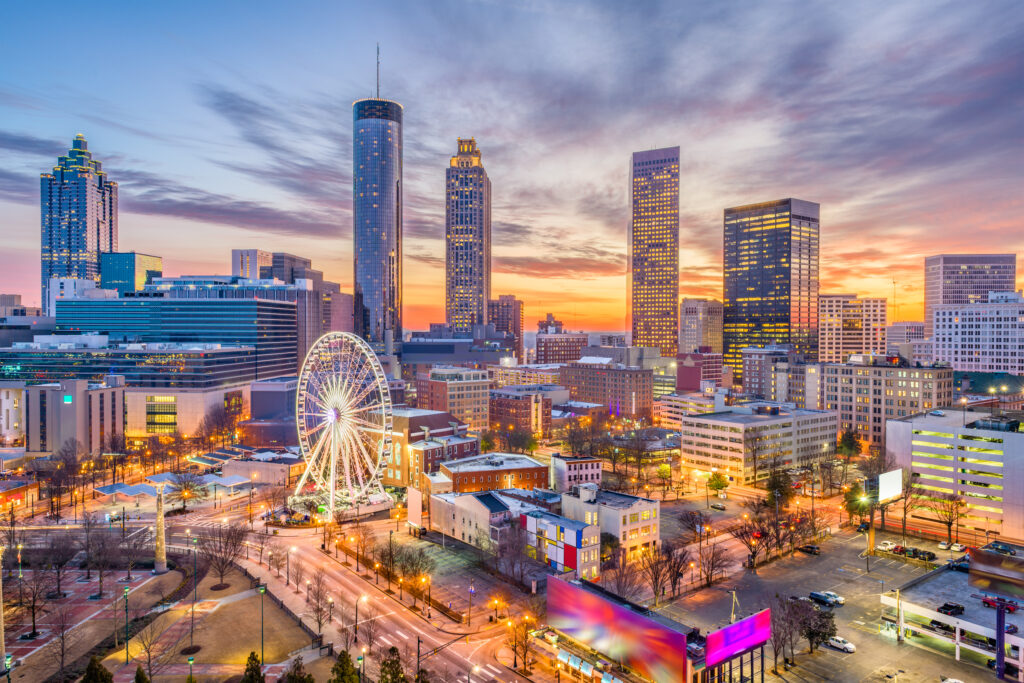
Atlanta stands as a city of transformation — a metropolis where history and innovation intertwine beneath a skyline that gleams with confidence. Once burned to ashes during the Civil War, Atlanta has risen time and again, its story becoming a symbol of the New South: bold, diverse, and relentlessly forward-looking.
Today, the city pulses with creative energy. In Midtown and Downtown, glass towers rise beside 19th-century facades, while the Atlanta BeltLine — a network of parks and trails — redefines urban life with murals, pop-up art, and greenery. The Martin Luther King Jr. National Historical Park stands as a testament to the city’s role in shaping civil rights, where visitors walk the same streets that echoed with the voice of change.
Atlanta’s neighborhoods are worlds of their own — Inman Park’s Victorian elegance, Little Five Points’ bohemian spirit, Buckhead’s cosmopolitan polish. Food here tells the city’s evolving story: from soulful Southern cooking to global fusion, each dish carries both memory and momentum. And when night falls, the rhythm of Atlanta — its music, its laughter, its unstoppable drive — seems to rise into the warm air.
More than a destination, Atlanta is an experience of progress in motion — where the South remembers, rebuilds, and reimagines itself, every single day.
Savannah — The City of Southern Grace
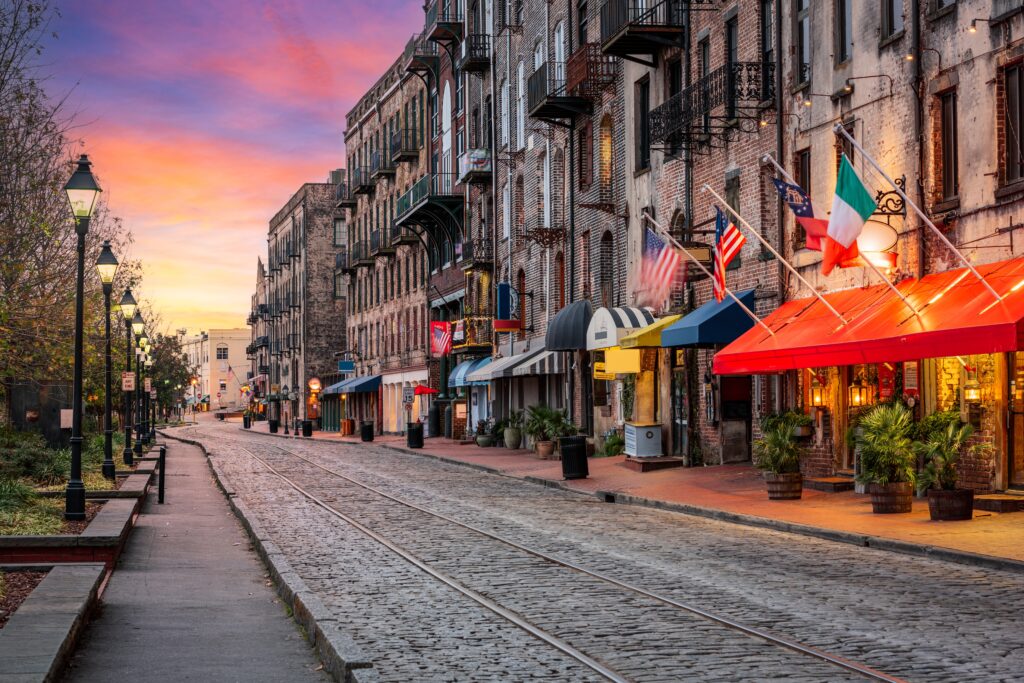
Few cities in America hold time as gently as Savannah. Draped in Spanish moss and romance, this coastal jewel feels suspended between centuries — a living dream of cobblestone streets, secret gardens, and oak-lined squares where the past lingers in every whisper of the breeze.
Founded in 1733, Savannah is one of America’s oldest planned cities, its layout an elegant grid of parks and boulevards. Each square — from Chippewa to Forsyth — is a miniature world of ironwork balconies, blooming azaleas, and shaded benches where strangers become storytellers.
Art and history are woven into Savannah’s soul. The Savannah College of Art and Design (SCAD) infuses the city with youthful creativity, while historic homes like the Owens-Thomas House and Mercer-Williams House offer windows into the South’s layered past. The riverfront hums with music and the scent of pralines, and by night, gas lamps flicker across the city’s famously haunted lanes.
Savannah is not a city to be toured but to be felt — slowly, beneath the oaks, in the glow of twilight, when everything seems touched by memory. It is beauty, mystery, and Southern grace — perfectly distilled.
Athens — Where Art and Music Collide
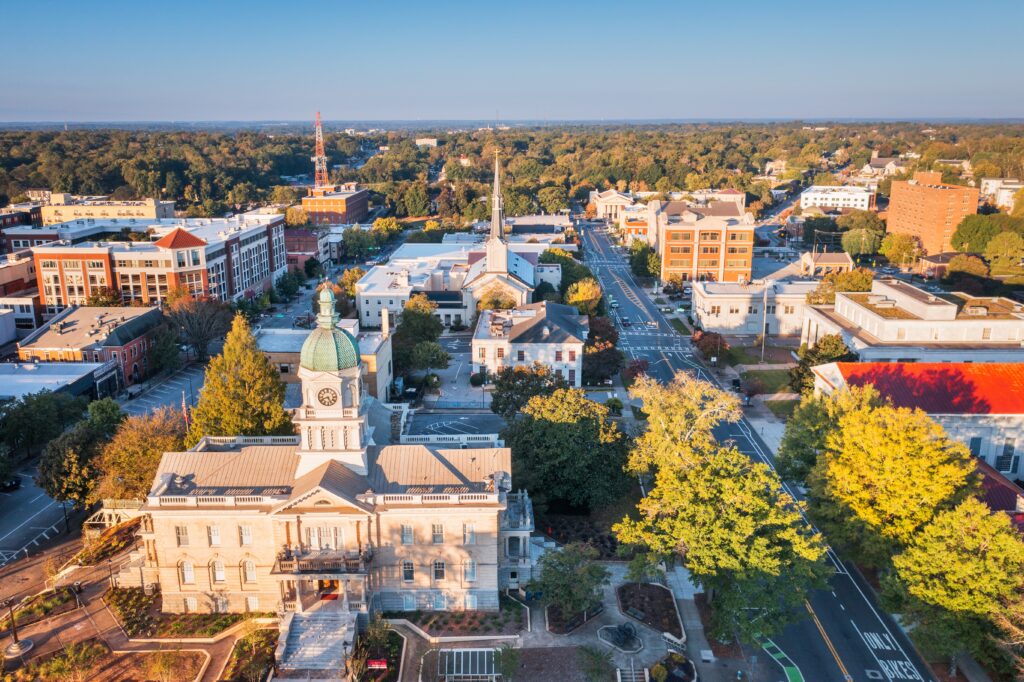
Home to the University of Georgia, Athens is where youthful energy and creative daring meet the soul of the South. Once a quiet college town, it became an unlikely epicenter of American music in the late 20th century — birthplace of bands like R.E.M., The B-52’s, and Of Montreal, whose sounds still echo through its brick-lined streets.
Downtown Athens is alive with color — murals, indie record shops, and cafés where poets and musicians trade ideas as naturally as conversation. The Georgia Theatre and 40 Watt Club remain hallowed ground for music lovers, their stages glowing with legacy and new promise alike.
Yet Athens is not only rhythm and art — it is also a place of learning, of intellect softened by Southern charm. The State Botanical Garden of Georgia and the Georgia Museum of Art reveal a quieter side, where nature and culture bloom together.
Athens embodies a kind of magic — where creativity feels organic, where every night might hold discovery, and where the South’s tradition of storytelling finds new voices in song.
Macon — The Heartbeat of Soul
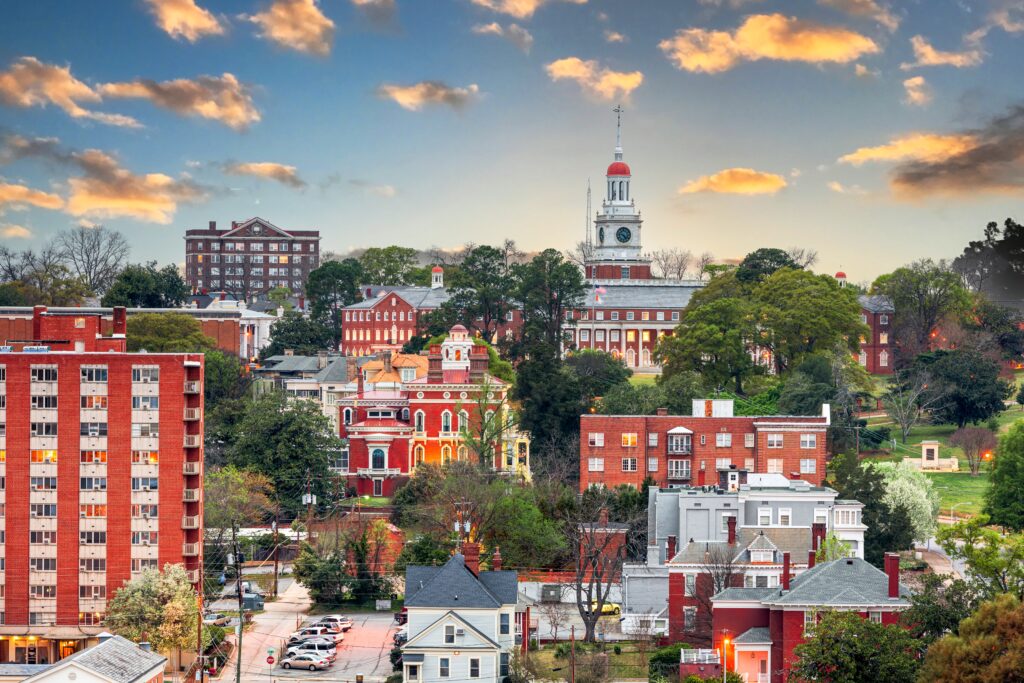
In the center of Georgia, where the Ocmulgee River winds through a landscape rich with memory, lies Macon — a city that seems to hum with music even in silence. Often called the birthplace of Southern soul, Macon has shaped American sound in ways few places can claim.
This is the city that raised Otis Redding, Little Richard, and the Allman Brothers Band. Their spirits linger in the air, in the rhythm of downtown streets and in the walls of the Big House Museum, once home to the Allman Brothers themselves. The Tubman Museum, dedicated to African American art and history, deepens that sense of cultural resonance — reminding visitors that creativity here has always been an act of both beauty and resilience.
But Macon’s roots reach even deeper — to the ancient Ocmulgee Mounds, where earthworks built by Native peoples over a thousand years ago still rise from the riverside plain. Standing there at sunset, one feels the continuity of Georgia’s story — layers of time and spirit, woven together like melody and harmony.

Modern Macon is lively and proud, with revitalized downtown cafés, murals, and music festivals that keep its creative heart beating strong. It is a city of rhythm and remembrance — a place where every note carries history, and every breeze feels like song.
Augusta — Grace by the River

Grace flows quietly through Augusta, a city that balances tradition and tranquility along the banks of the Savannah River. Known to the world for The Masters Tournament, the annual celebration of golf’s timeless beauty at Augusta National, the city’s charm extends far beyond its fairways.
Founded in 1736, Augusta wears its history gracefully. The Riverwalk stretches beside the water, shaded by cypress and magnolia, while stately antebellum homes line Broad Street, whispering stories of cotton, commerce, and change. The city’s cultural roots run deep — James Brown, the “Godfather of Soul,” was born here, and his legacy still pulses through the rhythm of local music venues.
Augusta also reveals a more intimate side — its gardens, quiet parks, and the Morris Museum of Art, dedicated to the visual heritage of the American South. Beyond the city, rolling countryside and the calm expanse of Clarks Hill Lake invite reflection and rest.
There’s a sense of timeless composure in Augusta — a mix of Southern dignity and natural grace. Here, life moves to an unhurried rhythm, like a river in no rush to reach the sea.
Dahlonega — Gold, Mountains, and Mist
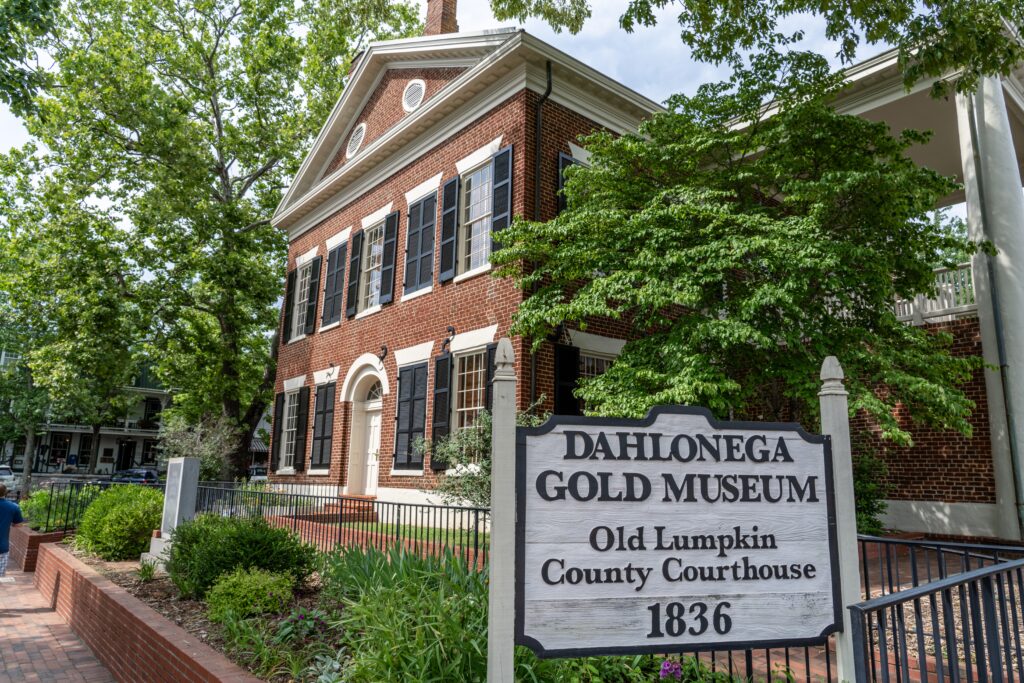
High in the North Georgia Mountains, surrounded by forests that glow amber in autumn, lies Dahlonega — a town whose name itself means “yellow metal.” It was here, in 1828, that America’s first major gold rush began, long before California’s glittering fame. Today, the town’s legacy shines not in gold dust, but in charm.
Dahlonega’s historic square still feels like a 19th-century dream: brick storefronts, local art galleries, and the echo of fiddles drifting from old saloons. The Dahlonega Gold Museum, housed in a former courthouse, tells stories of fortune-seekers and frontier life, while the surrounding hills now host another kind of gold — the lush vineyards of Georgia’s growing wine country.
Beyond town, adventure awaits. The Appalachian Trail begins nearby at Springer Mountain, calling hikers into misty ridges and whispering forests. Waterfalls cascade through the Chattahoochee National Forest, each one more hidden and lovely than the last.
Dahlonega captures the soul of North Georgia — a blend of history, wilderness, and quiet wonder. It is a place where the mountains hold secrets, the past glitters softly, and every sunrise feels like discovery.
Blue Ridge — The Soul of the Mountains
Tucked within the rolling embrace of the Appalachian Mountains, Blue Ridge feels like a painting come to life — a world of mist, pine, and silence broken only by birdsong. This small town in North Georgia is more than a mountain retreat; it is a sanctuary for the senses.
Downtown Blue Ridge, with its art galleries, craft breweries, and charming railway depot, radiates a rustic warmth. The Blue Ridge Scenic Railway winds through forests and along the Toccoa River, offering travelers a slow, meditative view of the region’s natural beauty. Each season here transforms the landscape — in autumn, hillsides burn gold and crimson; in spring, dogwoods and rhododendrons bloom in soft profusion.

Yet the true spirit of Blue Ridge lies beyond its streets — in its waterfalls, hiking trails, and endless sky. The nearby Cohutta Wilderness and Appalachian Trail invite adventurers into the heart of Georgia’s mountain soul. And as dusk settles over Lake Blue Ridge, with its mirrored waters glowing under the setting sun, it’s easy to understand why this place feels timeless — where the world slows, and peace takes root.
Jekyll Island — The Gilded Coast

Off Georgia’s southeastern shore lies Jekyll Island, a world of salt marshes, whispering tides, and grandeur faded into grace. Once an exclusive playground for America’s richest families — the Rockefellers, Morgans, and Vanderbilts — Jekyll has become a sanctuary of beauty and stillness.

The Jekyll Island Club, now a grand hotel, stands as a monument to the Gilded Age, its turrets and verandas recalling a time when wealth and elegance mingled with the sea breeze. Yet today, the island belongs not to tycoons, but to the tide and the wind. Miles of unspoiled beach stretch along its shores, most famously Driftwood Beach, where ancient trees lie silvered by sun and salt — sculpted by nature into haunting beauty.
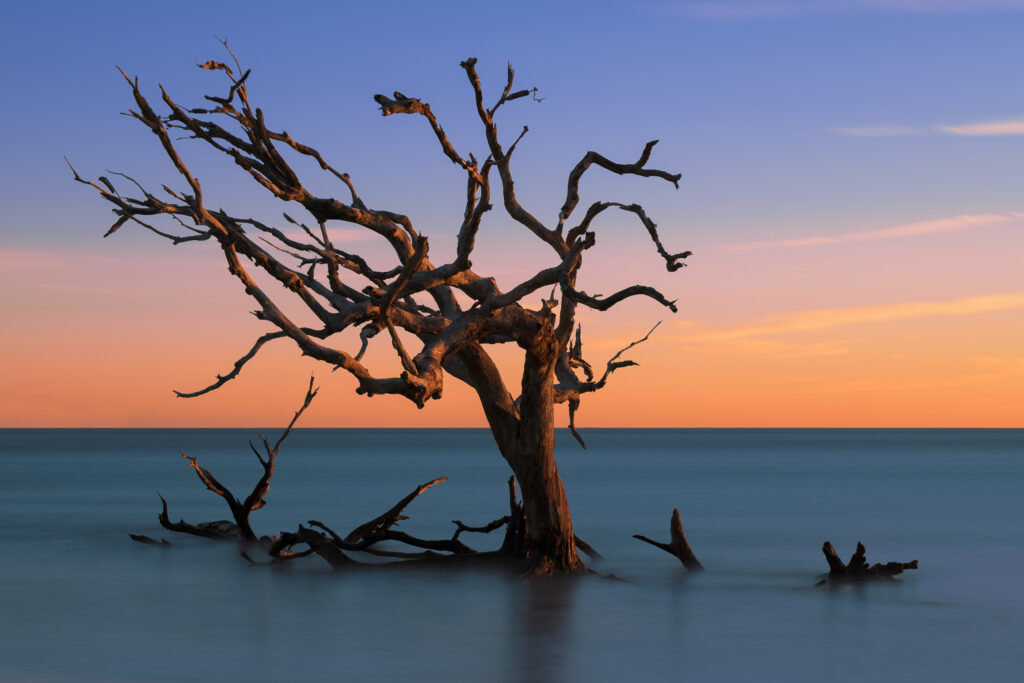
Beyond the coast, trails wind through maritime forests and salt flats where egrets and herons nest undisturbed. The Georgia Sea Turtle Center adds a note of hope, tending to rescued turtles before releasing them back into the wild.
Jekyll Island is a place of balance — between past and present, refinement and raw nature. It reminds visitors that even history’s grandest legacies fade before the sea’s quiet eternity.
St. Simons Island — Sanctuary by the Sea

If Jekyll whispers, St. Simons Island sings — with ocean wind, church bells, and the laughter of families who have come here for generations. The largest of Georgia’s Golden Isles, St. Simons is at once refined and deeply human, where beauty feels lived-in rather than polished.
Live oaks draped in Spanish moss form canopies over old roads, leading to hidden beaches and historic treasures. The St. Simons Lighthouse, rising white above the harbor, stands as both a beacon and a symbol of continuity. Nearby, the Christ Church grounds are shaded by centuries-old trees, and its cemetery tells the quiet story of coastal life — sailors, settlers, and dreamers all resting within the whisper of the tide.
The island’s natural rhythm invites slowness: biking along East Beach, kayaking through marshes alive with egrets, watching the sunset ignite the water at Neptune Park. Yet St. Simons is not simply serene; it has soul — a sense of belonging, of place, that transcends time.
It is a sanctuary not just by the sea, but of the spirit — the kind of place where even the wind seems to remember.
Cumberland Island — Wilderness and Memory

Cumberland Island is Georgia’s most hauntingly beautiful secret — a place where wild horses graze beneath wind-twisted oaks, where the Atlantic sighs against deserted dunes, and where ruins sleep beneath the moss. Accessible only by ferry, this barrier island feels entirely removed from the modern world.
Once the private domain of the Carnegie family, Cumberland still bears the ghostly remains of Dungeness Mansion, its crumbling stone walls standing sentinel among the palmettos. But it is nature, not history, that rules here. The Cumberland Island National Seashore protects over 36,000 acres of untouched wilderness — maritime forests, salt marshes, and beaches that stretch for miles without a footprint.
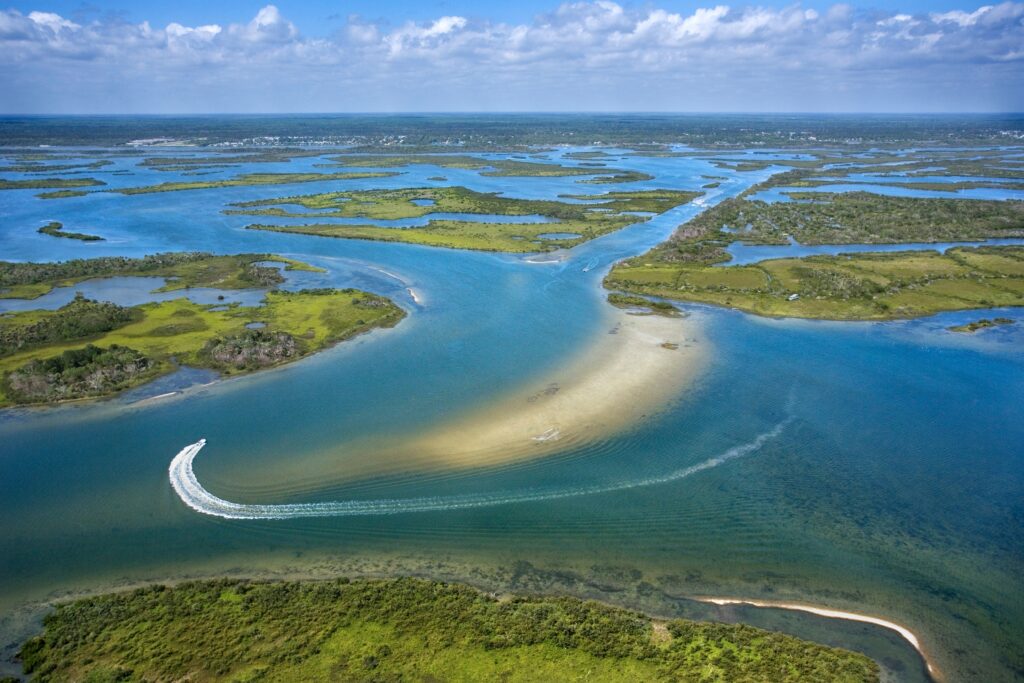
Visitors wander past armadillos and deer, across boardwalks lined with ferns, to where the sea opens like eternity. The quiet here is absolute, broken only by birdsong or the distant thunder of surf. Each sunrise over the Atlantic feels primeval, reminding one of a world before cities and clocks.
Cumberland Island is not simply beautiful — it is sacred in its stillness, a rare sanctuary where the wild heart of Georgia continues to breathe, unbroken.
Tybee Island — Where the Coast Meets the Sky
Just east of Savannah lies Tybee Island, a sunlit blend of seaside nostalgia and natural charm. Known as “Savannah’s Beach,” Tybee has long been the city’s beloved escape — a place of bright horizons, salt in the air, and joy without pretense.
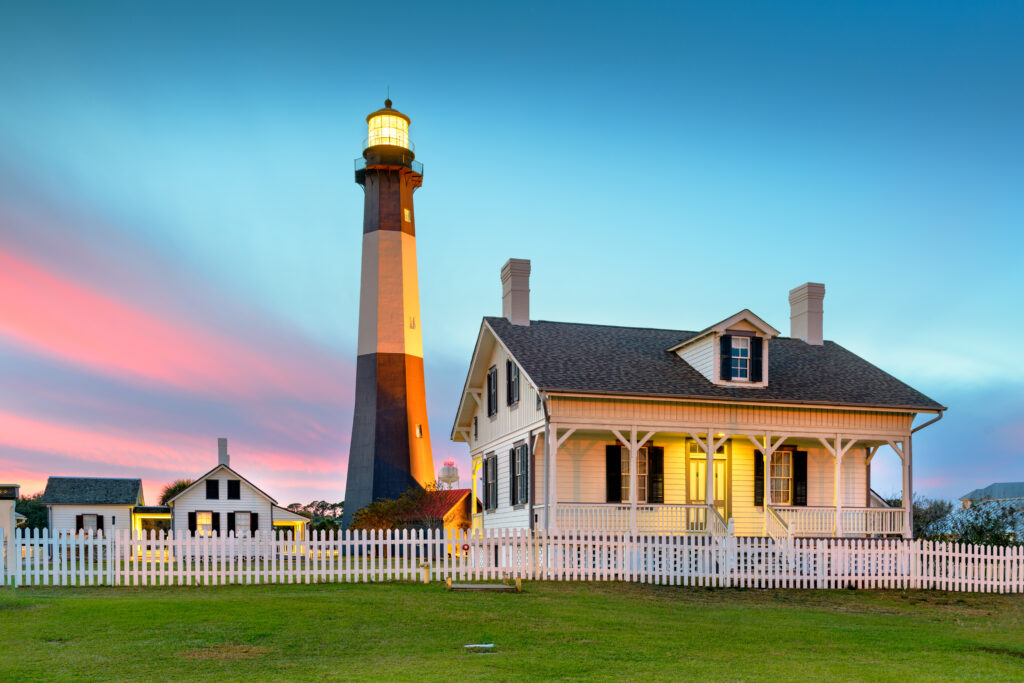
The Tybee Island Lighthouse, Georgia’s oldest and tallest, stands proudly at the island’s north end, watching over miles of shifting sand and restless sea. Below it, visitors cycle along shaded lanes or stroll the lively pier, where fishermen cast lines and families gather for sunset.
Despite its easygoing energy, Tybee has depth — its salt marshes are alive with herons and fiddler crabs, and its waters carry stories of centuries of sailors, traders, and dreamers. The nearby Fort Pulaski, a beautifully preserved Civil War fort, adds a note of solemnity amid the surf.
Tybee’s charm lies in its balance — carefree yet grounded, vibrant yet humble. It captures the spirit of the Georgia coast in miniature: open skies, honest pleasures, and a timeless connection to the sea.
Thomasville — The Rose-Scented South
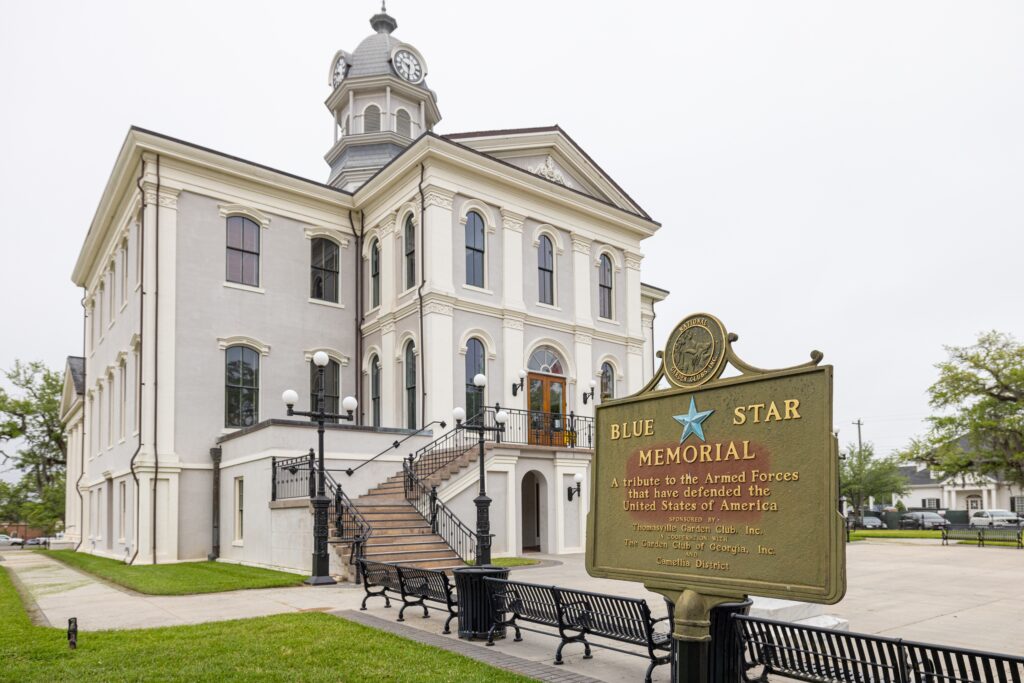
In Georgia’s southwest corner, where longleaf pines sway and time slows to a gracious rhythm, lies Thomasville — a town that defines Southern gentility. Known as the “City of Roses,” it blooms in more ways than one, its streets lined with historic homes, flowering gardens, and the warm hum of community.
Once a winter resort for Northern industrialists, Thomasville still carries an air of quiet sophistication. The grand estates of the Plantation Era — like Pebble Hill — blend architectural beauty with pastoral calm, surrounded by moss-draped oaks. In spring, the Rose Show and Festival transforms the town into a living bouquet, a celebration of color, scent, and pride.
Downtown, brick buildings house antique shops, cafés, and boutiques, while locals greet one another by name beneath the shade of the Big Oak, a live oak more than three centuries old. But Thomasville’s soul is not only in its beauty — it’s in its graciousness, its sense of belonging, its ability to make visitors feel instantly at home.
Thomasville is the South at its most elegant and heartfelt — a place where tradition still blooms, fragrant and enduring.
Madison — The Town Sherman Spared

In the heart of Georgia lies Madison, a town so graceful and intact that it feels almost like a Southern dream preserved in amber. During General Sherman’s infamous “March to the Sea,” Madison was famously spared from destruction — legend says out of admiration for its beauty. Whatever the truth, the result is one of the most stunning collections of antebellum architecture in the South.
Broad, tree-lined streets are framed by columned mansions, their verandas shaded by magnolias and oaks. The Madison Historic District holds over a hundred preserved buildings, from Greek Revival homes to quaint cottages — each one a whisper of the 19th century. Yet Madison is no museum; it’s a living town, vibrant and warm.

The Madison-Morgan Cultural Center, housed in a restored Romanesque Revival schoolhouse, embodies the community’s devotion to heritage and art. Local boutiques, farm-to-table cafés, and antique shops fill downtown with quiet charm.
To stroll through Madison is to wander through Georgia’s soul — elegant, enduring, and deeply human. It is a town that survived not by accident, but by grace — and continues to embody the timeless beauty of the Old South reborn.
Helen — A Bavarian Dream in the Blue Ridge

High in the North Georgia Mountains, the town of Helen offers one of the state’s most surprising delights — a Bavarian village nestled among Appalachian peaks. What began as a logging town reinvented itself in the 1960s, when creative locals transformed it into an Alpine wonderland of gingerbread architecture, cobblestone alleys, and flower-filled balconies.
Today, Helen feels like a postcard come to life. The Chattahoochee River flows right through town, where visitors float on inner tubes past half-timbered shops and beer gardens. The air carries the scent of pretzels, strudel, and sausages, while festivals like Oktoberfest fill the streets with music and laughter.
Beyond its whimsical façade, Helen is surrounded by natural splendor — waterfalls, hiking trails, and scenic drives through the Blue Ridge foothills. Anna Ruby Falls, just a short drive away, tumbles through a lush forest like liquid crystal.
Helen may not be old, but it is full of joy — proof that imagination can create its own kind of heritage. In a state steeped in history, Helen reminds visitors that wonder is timeless.
Tallulah Gorge — Georgia’s Grand Canyon
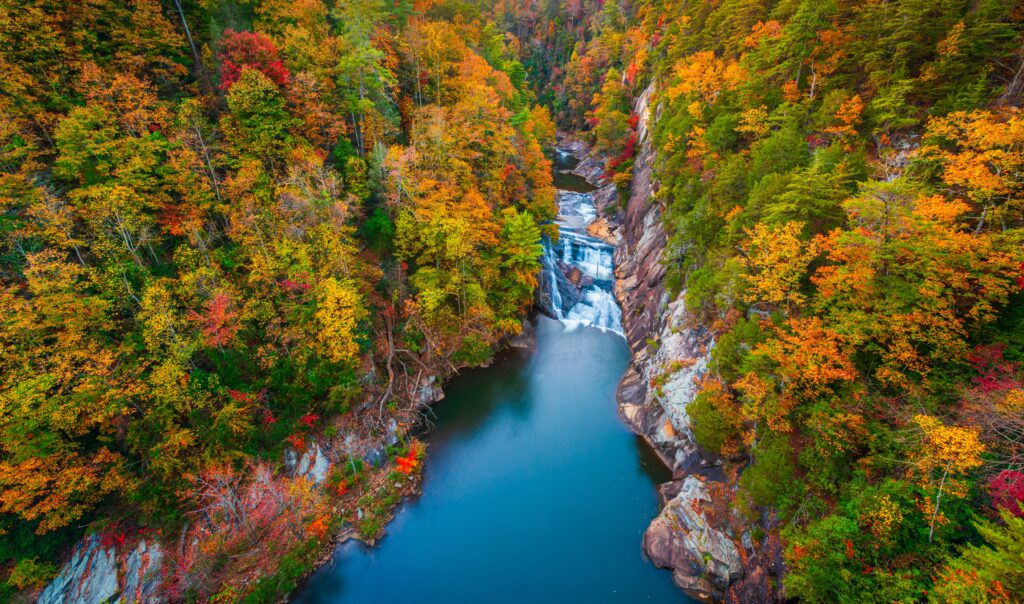
Few sights in Georgia are as awe-inspiring as Tallulah Gorge, a two-mile-long chasm carved deep into the ancient rock of the northeast. Plunging nearly 1,000 feet at its deepest, this natural wonder rivals any canyon in America for sheer drama and beauty.
At the heart of Tallulah Gorge State Park, the river roars through the abyss, cascading over six major waterfalls known collectively as the Tallulah Falls. The Hurricane Falls Suspension Bridge, suspended high above the canyon floor, offers a view so breathtaking it silences conversation — a moment of pure communion with nature’s power.
In the 19th century, the gorge became one of the South’s first tourist attractions, drawing visitors by train to marvel at its grandeur. Today, it remains as wild and majestic as ever, with overlooks, hiking trails, and rock walls glowing in shades of amber and rust.
Tallulah Gorge is more than scenery — it is Georgia in its rawest form: vast, ancient, and humbling. It reminds every traveler that even in a land of gentleness, nature still holds a fierce and magnificent strength.
Callaway Gardens — Blossoms and Tranquility

In western Georgia, near the gentle hills of Pine Mountain, lies Callaway Gardens — a place so peaceful and pure that it feels almost like a living poem. Created in the 1950s by Cason and Virginia Callaway as a retreat for rest and renewal, the gardens have grown into one of the South’s great sanctuaries of natural beauty.
Spread across 2,500 acres, Callaway Gardens blends formal design with untamed grace. The Azalea Bowl bursts into color each spring, painting the landscape in pink and scarlet, while the Butterfly Center shimmers with delicate wings in a glasshouse filled with tropical light. The Discovery Center tells stories of the region’s flora and fauna, and quiet lakes reflect pine and sky like mirrors of calm.
Beyond the gardens, cycling paths and woodland trails invite exploration, leading to the serene Robin Lake Beach, where summer days unfold in gentle rhythm. Every detail here seems designed to soothe the spirit — a reminder that beauty, when nurtured, can heal.
Callaway Gardens is more than a park; it’s a vision of harmony between people and nature. Each petal, each pine, each breeze carries the intention of peace — the soul of Georgia in bloom.
Columbus — The River City Reimagined

Straddling the Chattahoochee River on Georgia’s western edge, Columbus is a city of revival — where Southern history meets a bold sense of adventure. Once an industrial powerhouse, it has transformed itself into a vibrant cultural and outdoor hub without losing its heritage.
The Chattahoochee RiverWalk, stretching for miles along the waterfront, is the city’s lifeline. Here, cyclists, runners, and kayakers move in rhythm with the flowing water, while the Whitewater Express, one of the world’s largest urban rafting courses, adds an exhilarating pulse. Downtown, restored mills and warehouses now house cafés, art galleries, and lofts, creating a blend of old soul and new energy.
The National Infantry Museum, widely regarded as one of the finest military museums in the country, tells stories of courage and service, while the Springer Opera House, Georgia’s official state theater, celebrates the performing arts in grand 19th-century style.
Columbus has learned how to evolve gracefully — honoring its roots while embracing the modern South. It’s a city that proves reinvention can be as beautiful as preservation, flowing forward like the river that defines it.
Okefenokee Swamp — The Primeval South
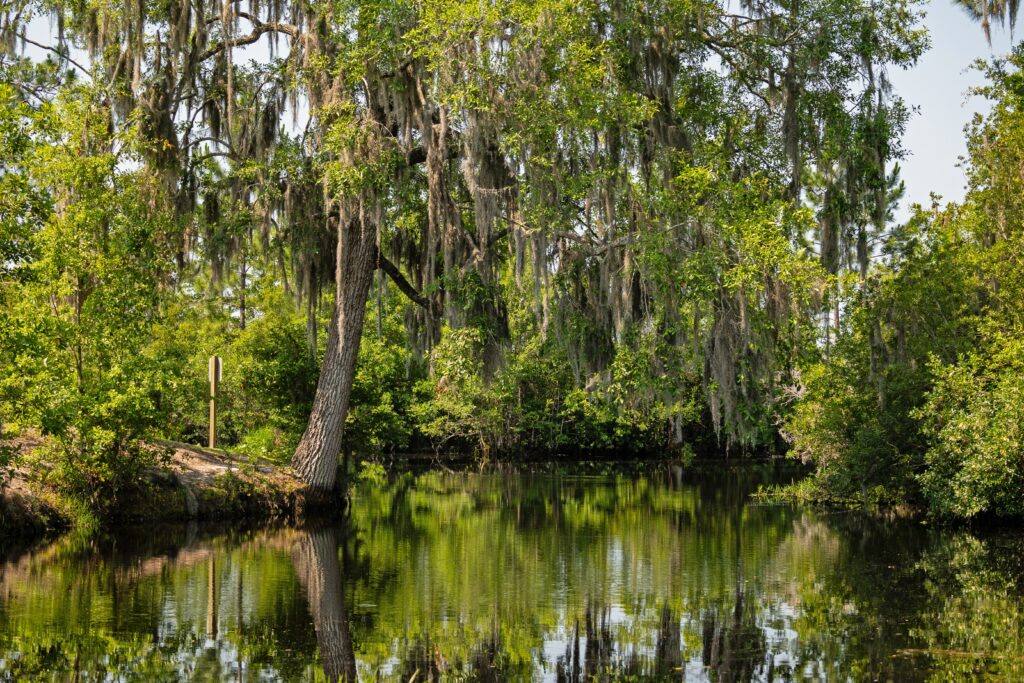
Deep in the southeastern corner of Georgia lies a world like no other — the Okefenokee Swamp, a vast wilderness of dark waters, cypress forests, and floating islands where the past still breathes. Spanning nearly 700 square miles, it is one of North America’s great natural treasures — ancient, mysterious, and alive with quiet majesty.
Here, sunlight filters through curtains of Spanish moss onto blackwater channels that shimmer like obsidian. Alligators glide silently between lily pads, sandhill cranes cry across the open prairie, and turtles sun themselves on half-submerged logs. The swamp is a place of both beauty and power — untamed yet balanced, eerie yet deeply peaceful.
Visitors can explore by canoe, kayak, or guided boat, gliding through passages that seem unchanged for millennia. The Okefenokee National Wildlife Refuge protects this fragile ecosystem, ensuring that its wild music — frogs, birds, wind — will continue to play.
There is a stillness in the Okefenokee that humbles the soul. To stand there, listening to the heartbeat of ancient water, is to understand the South at its most primal — not just a place, but a living memory of the earth itself.
Providence Canyon — Georgia’s Little Grand Canyon

In the quiet countryside of southwest Georgia, far from interstates and skylines, lies a place that seems almost impossible — Providence Canyon, often called “Georgia’s Little Grand Canyon.” Formed not by ancient rivers, but by human hands, its colorful cliffs and ravines are both a warning and a wonder.
In the 1800s, poor farming practices eroded the land, carving deep gullies into the soft clay. What began as a mistake became a masterpiece — an accidental sculpture of pink, orange, and crimson earth rising from green forest. Today, the Providence Canyon State Park protects this surreal landscape, where hiking trails wind through narrow passages and open onto vistas that blaze with color beneath the sun.
The canyon’s hues shift with the light — morning brings soft rose and gold, while sunset ignites the walls into living fire. It is a place that reminds visitors of nature’s resilience: even from destruction, beauty can emerge.
Providence Canyon is Georgia’s quiet paradox — a human scar transformed into natural poetry, proof that the land, like the spirit, can heal and astonish.
Rome — The City of Seven Hills

Nestled where three rivers meet — the Etowah, the Oostanaula, and the Coosa — Rome sits amid rolling hills that echo its Italian namesake. Founded in the 1830s, this northwestern Georgia city blends heritage, learning, and charm with remarkable harmony.
At its heart is Berry College, one of the most beautiful campuses in America, its stone buildings set among forests and meadows that stretch for thousands of acres. The Myrtle Hill Cemetery, resting on one of the city’s famed seven hills, overlooks the confluence of rivers — a view steeped in both peace and history.
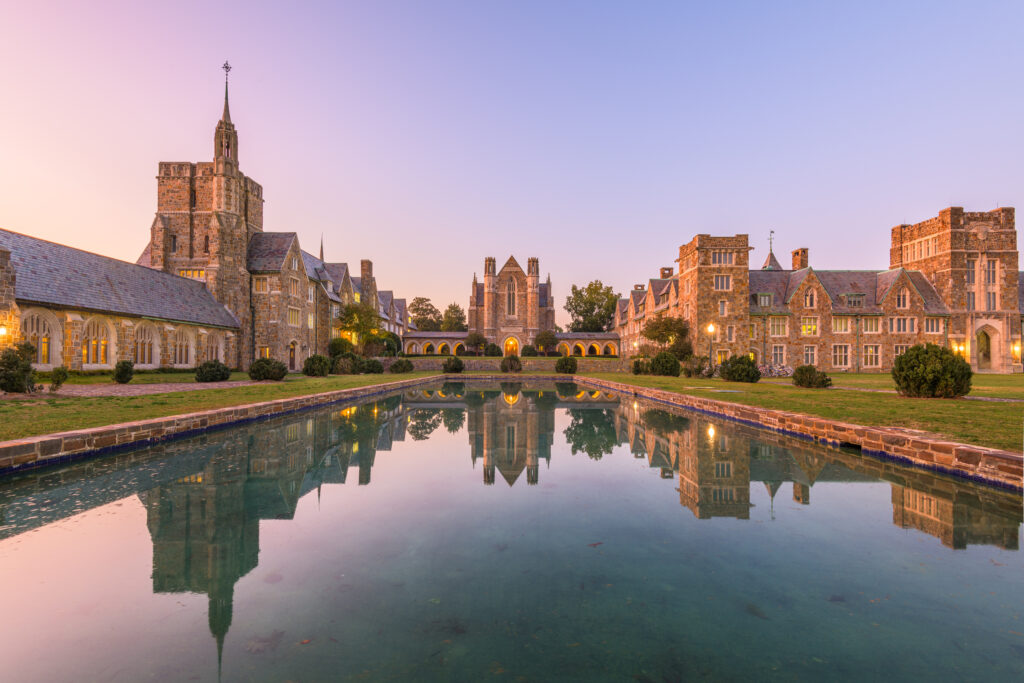
Downtown Rome hums with quiet life: boutique shops, cozy restaurants, and the melodies of street performers drifting beneath the glow of old lamps. The Rome Area History Center tells the city’s story — from Cherokee beginnings to the industrial age — while the rivers themselves invite paddleboarding, kayaking, or simple reflection on their calm surfaces.
Rome is Georgia distilled — graceful yet grounded, historic yet hopeful. It is a place where hills meet water, where stories meet silence, and where the South feels eternal.
Marietta — A Window into Georgia’s Civil War Past
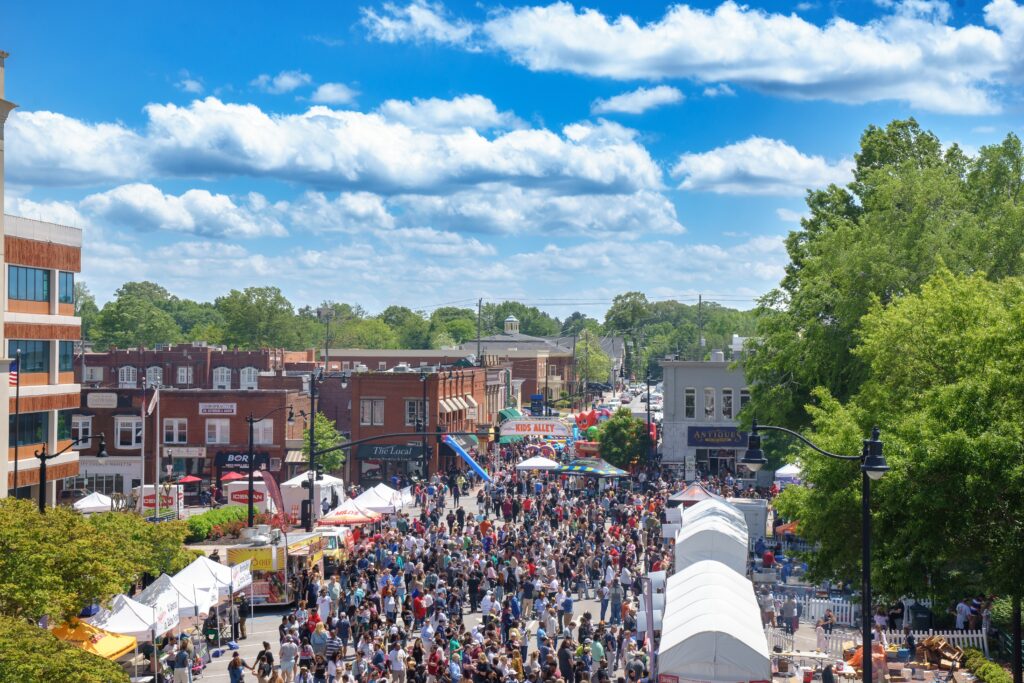
Nestled just north of Atlanta, Marietta offers a glimpse of Georgia’s antebellum grace, framed by magnolia-lined streets and the distant Blue Ridge foothills. Though often overshadowed by its bustling neighbor, Marietta holds its own with quiet dignity — a town where history breathes softly through every brick and oak.
At the center lies Marietta Square, its 19th-century courthouse surrounded by shops, cafes, and a lively farmers’ market. The Gone with the Wind Museum tells the story of Margaret Mitchell’s timeless novel and its ties to Southern identity. Yet beyond romantic nostalgia, Marietta acknowledges its layered history — the Civil War’s tragedies are remembered at Kennesaw Mountain National Battlefield Park, where trails lead through rolling hills once marked by conflict.
Modern Marietta thrives with creativity: art galleries fill restored warehouses, theaters light the evening air, and summer concerts fill the park. The city’s blend of memory and modernity captures what Georgia does best — holding the past with respect while stepping boldly toward the future.
Roswell — Where the River Meets the Old South
A few miles down the road from Marietta, Roswell whispers the story of the Old South through the rustle of the Chattahoochee River. Founded in the 1830s as a cotton mill town, Roswell’s identity remains tied to its antebellum mansions — Barrington Hall, Bulloch Hall, and Smith Plantation — which still grace shaded avenues.
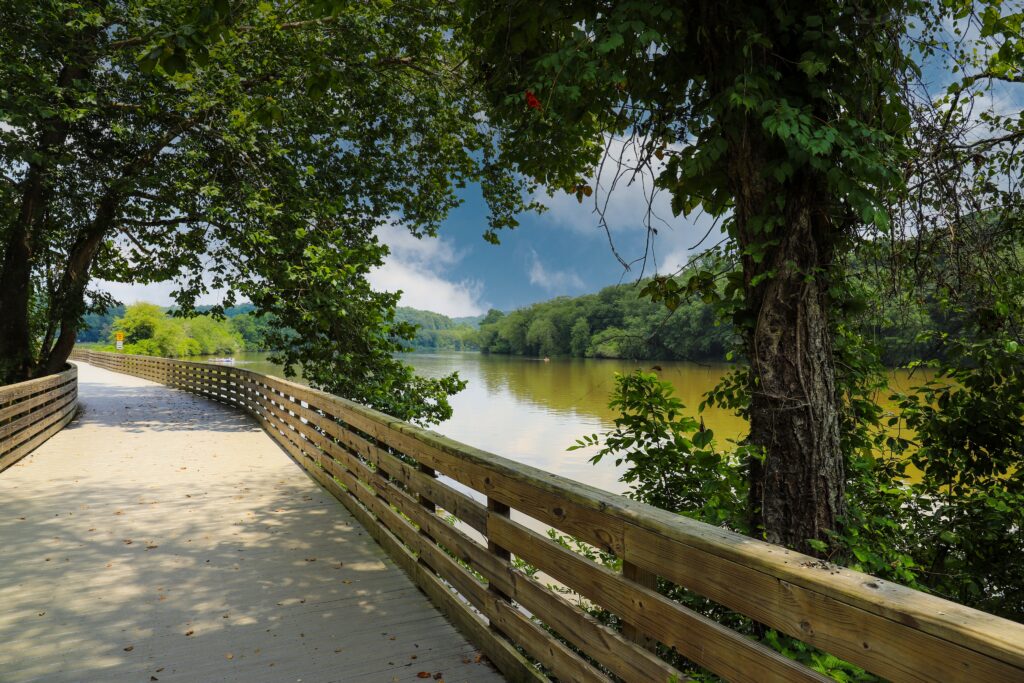
But Roswell is far more than history. Its Canton Street district hums with life, lined with boutique shops, rooftop cafes, and music spilling into the night air. The Chattahoochee Riverwalk invites kayakers and walkers alike, its waters glinting beneath Georgia sunlight.
There’s a balance here — between the genteel quiet of the past and the lively pulse of the present. Roswell stands as a bridge: between eras, between nature and city, and between remembrance and renewal.
Cloudland Canyon — At the Edge of the Mountains

Perched atop Lookout Mountain in northwest Georgia, Cloudland Canyon feels like a world apart — a highland kingdom where waterfalls plunge into mist and trails thread through sandstone cliffs.
Formed by centuries of erosion, the canyon’s twin waterfalls — Hemlock Falls and Cherokee Falls — cascade into emerald pools, drawing hikers and photographers year-round. The Sitton’s Gulch Trail winds through wildflower meadows and moss-covered boulders, leading to views that stretch far into neighboring Tennessee and Alabama.
What sets Cloudland Canyon apart is its sense of solitude. Even on busy days, one can find stillness in the rustle of pines and the whisper of falling water. It is a place for contemplation — a cathedral built not by hands but by time itself.
For those who wander its heights, Cloudland Canyon feels like Georgia’s quiet frontier — wild, unbroken, and infinitely humbling.
Fitzgerald — The Town of Wild Chickens and Southern Quirks
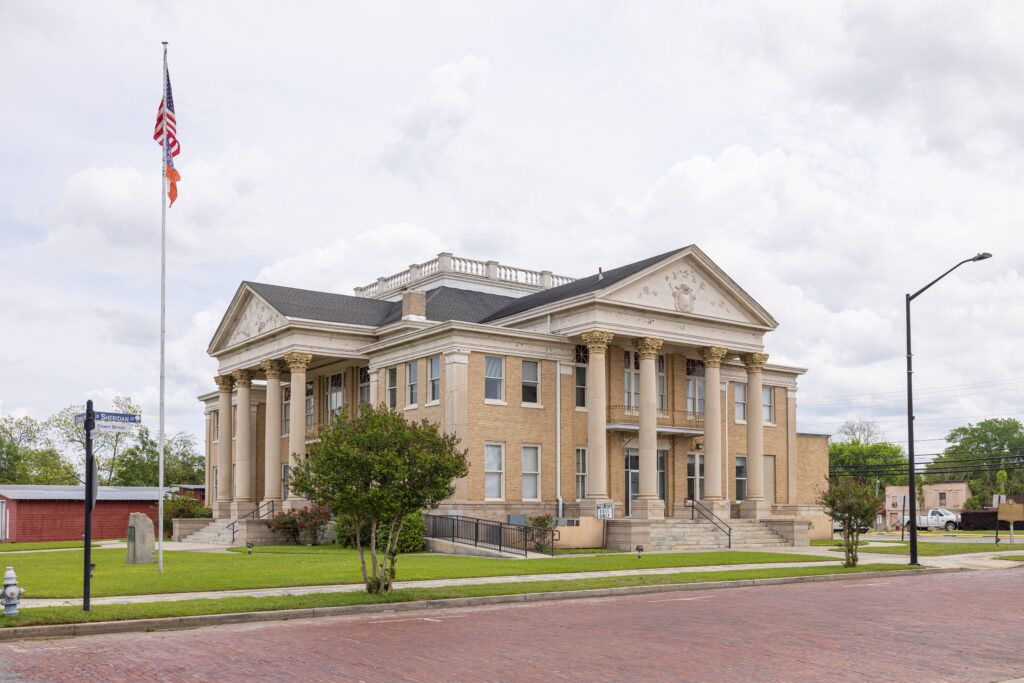
In the heart of south-central Georgia lies Fitzgerald, a town unlike any other — where flocks of Burmese chickens strut freely through streets and history hums with eccentric charm.
Founded in the 1890s as a haven for Union and Confederate veterans seeking reconciliation, Fitzgerald was built on the dream of unity after division. Its Blue and Gray Museum tells that story, chronicling a community born from the hope of healing old wounds.
But it’s the town’s unofficial mascots — the wild chickens — that have made it famous. Descended from exotic breeds once kept as pets, they now roam the parks and alleys like feathered ambassadors of independence.
Fitzgerald celebrates its quirks proudly. Its festivals, architecture, and friendliness capture small-town Georgia at its most human — flawed, funny, and full of heart.
Brunswick — The Port of the Golden Isles
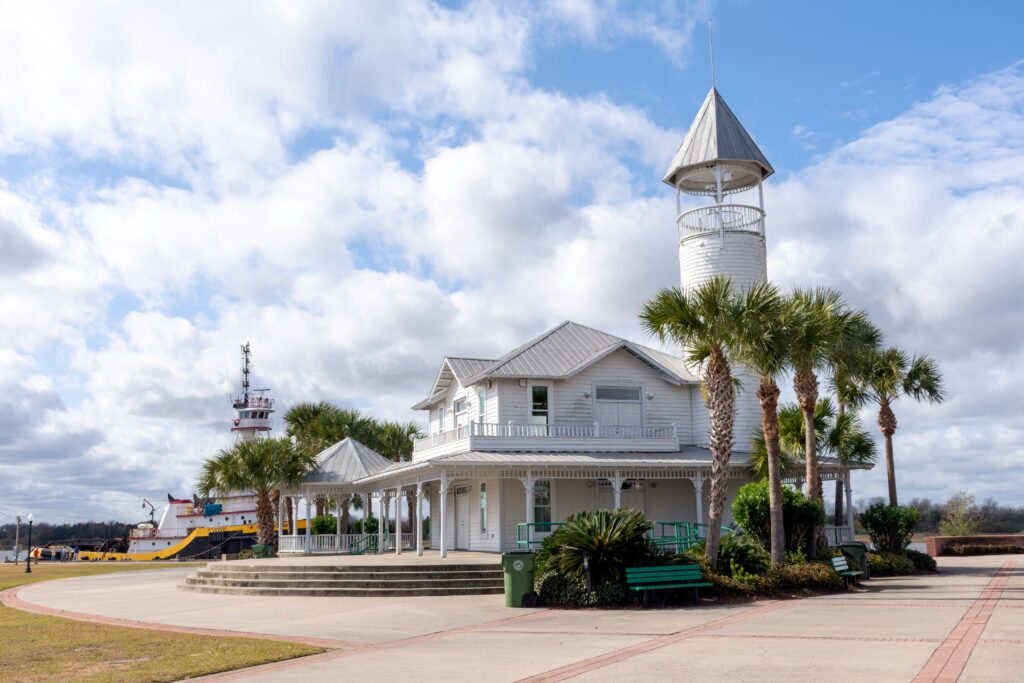
Gateway to the Golden Isles, Brunswick is one of Georgia’s oldest and most atmospheric coastal towns. Founded in 1771, it remains a working port — shrimp boats still bob along the docks, their nets drying under salt air.
The city’s historic district reflects centuries of maritime life, with squares reminiscent of Savannah and architecture that blends colonial and Victorian styles. The Lover’s Oak, said to be over 900 years old, anchors the town’s memory in deep time.
Beyond its streets, Brunswick serves as a launch point to St. Simons, Jekyll, and Sea Island — islands of soft sand and golden light. Yet Brunswick itself deserves lingering: its seafood restaurants, waterfront markets, and quiet pride capture the rhythm of Georgia’s coast.
Here, the ocean and the past coexist — endlessly patient, endlessly alive.
LaGrange — Legacy and Learning in the Heart of Georgia

In western Georgia, LaGrange combines classical beauty with modern energy. Founded in the 1820s, it took its name from the French estate of the Marquis de Lafayette — a symbol of enlightenment and grace that still suits the town today.
Home to LaGrange College, Georgia’s oldest private institution, the city brims with youthful vibrancy and cultural life. The Biblical History Center and Hills & Dales Estate offer windows into both faith and history, while nearby West Point Lake draws anglers and boaters to its sparkling waters.
LaGrange’s streets, shaded by oaks and azaleas, carry a quiet confidence — the feeling of a place deeply rooted yet always learning. In its harmony of education, heritage, and hospitality, LaGrange feels like the intellectual heart of small-town Georgia.
Milledgeville — The Gothic Soul of Georgia’s Past
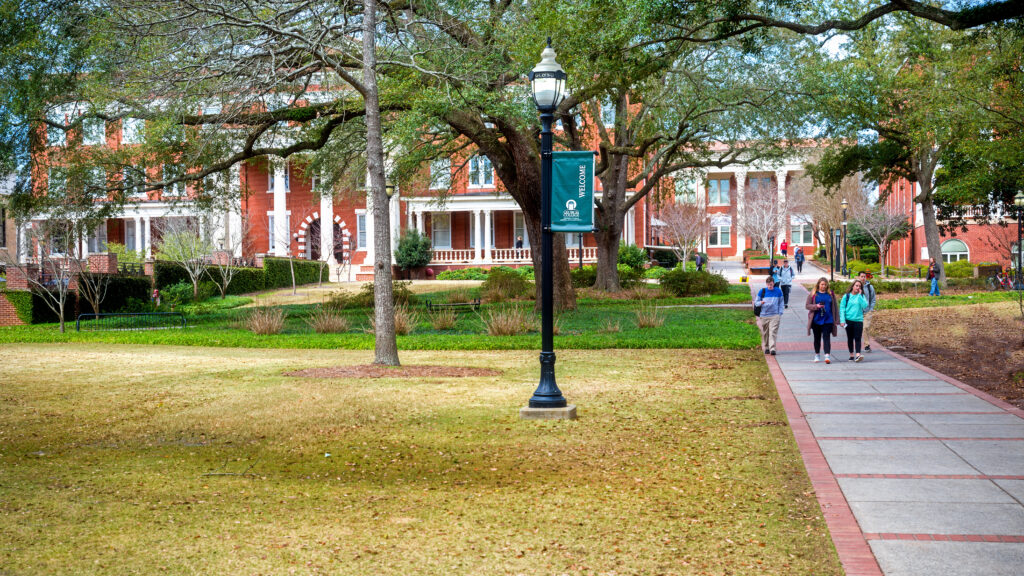
Once Georgia’s capital, Milledgeville is a town of haunting beauty — where Gothic spires rise above oak-lined avenues and echoes of history linger in the air.
Founded in 1803, it was the political and cultural heart of antebellum Georgia, a role still visible in the grand Old Governor’s Mansion and the stately buildings of Georgia College & State University.
But Milledgeville’s deeper soul belongs to literature. It was home to Flannery O’Connor, one of America’s greatest writers, whose Andalusia Farm now stands as a pilgrimage site for lovers of Southern Gothic storytelling.
Wandering Milledgeville feels like walking through one of O’Connor’s stories — beautiful, unsettling, and profoundly human. It is a reminder that Georgia’s identity is not just lived, but written.
Ellijay — Georgia’s Apple Capital

Tucked in the rolling hills of north Georgia, Ellijay is the Apple Capital of the South, where autumn turns the orchards into a festival of scent and color. Each October, the Georgia Apple Festival fills the town with music, crafts, and the sweet tang of cider in the air.
Beyond apples, Ellijay offers mountain serenity — rivers for kayaking, trails that wind through forests, and small cabins with views that stretch forever. It is the quiet twin of nearby Blue Ridge, less polished but equally full of charm.
Here, life feels wholesome and slow — measured by seasons, not schedules. Ellijay is Georgia’s pastoral heartbeat: simple, natural, and endlessly generous.

